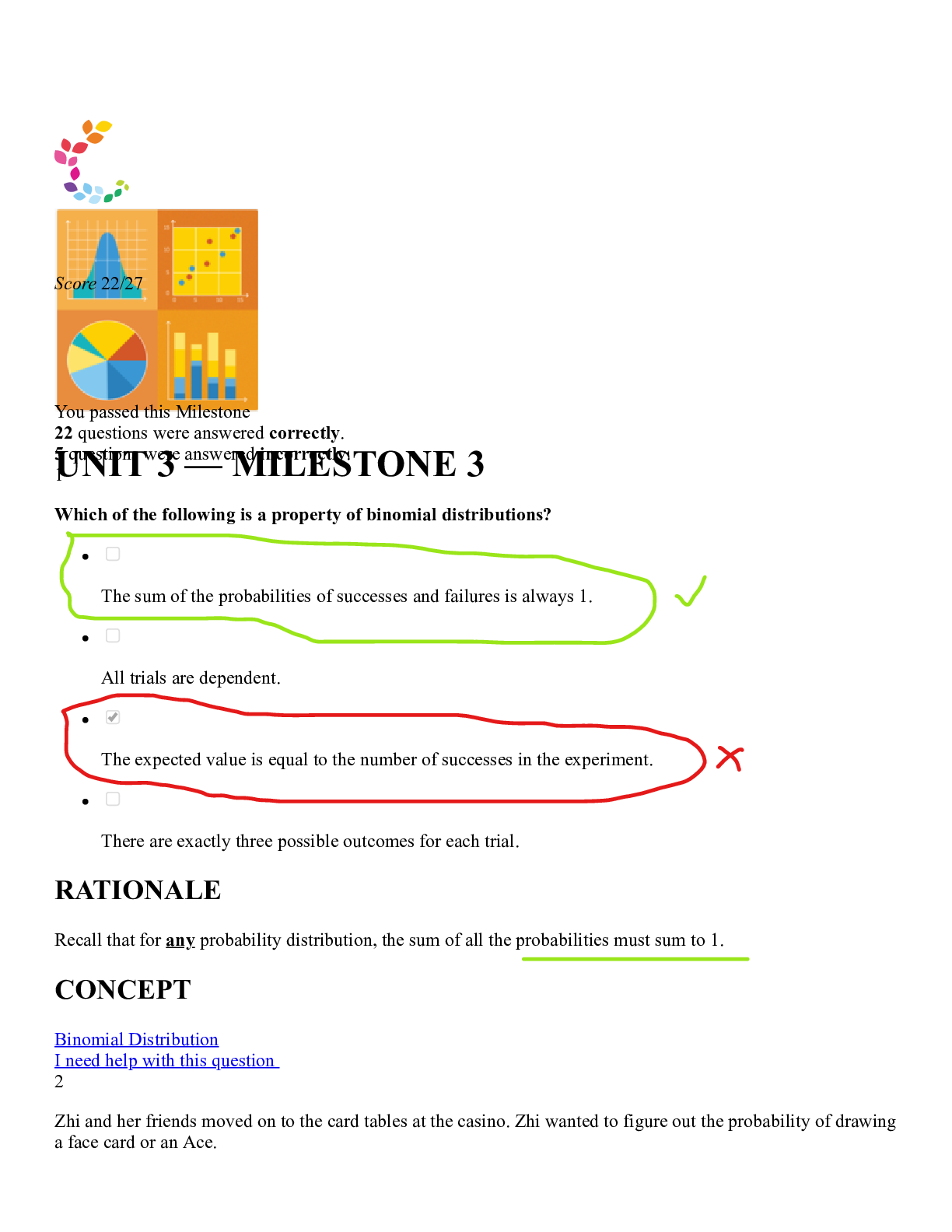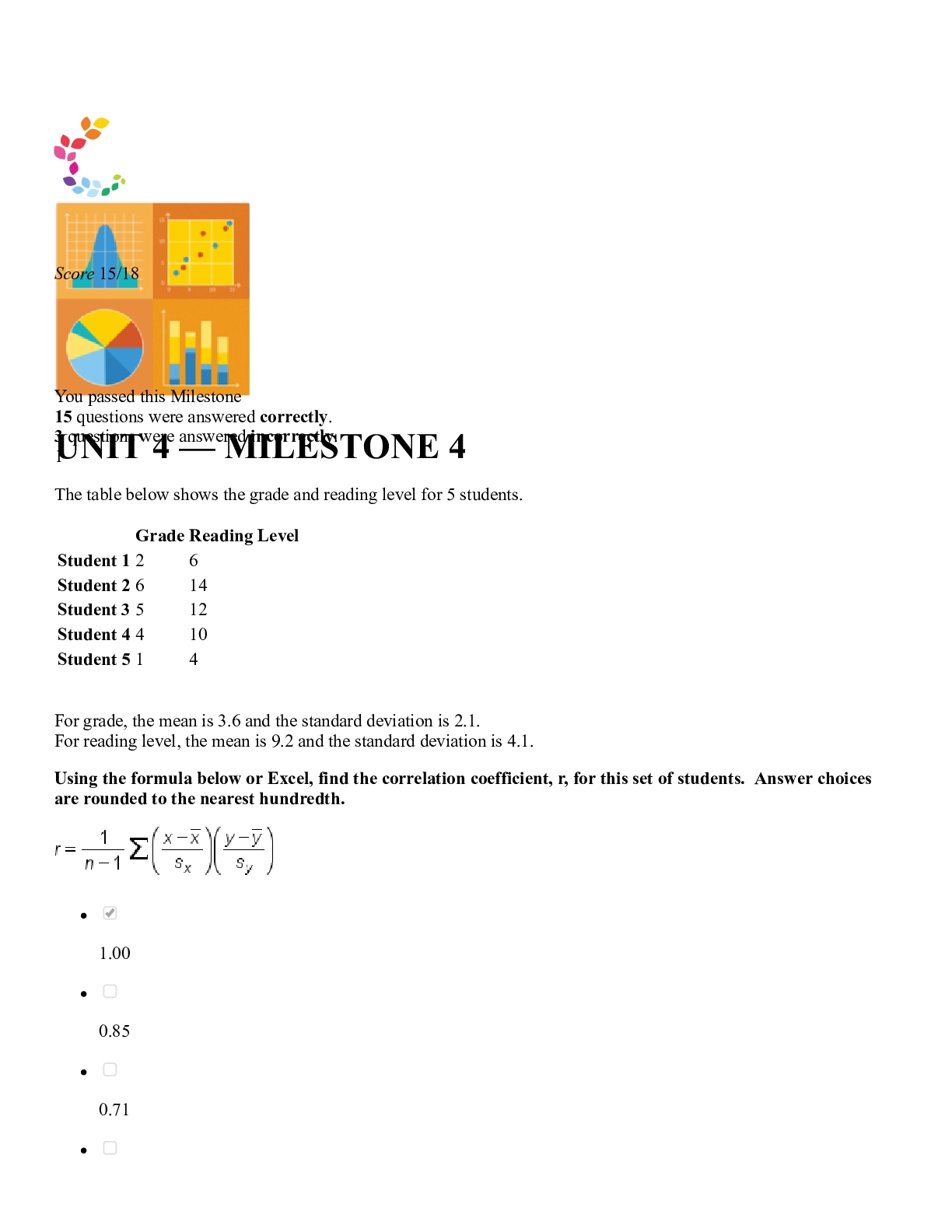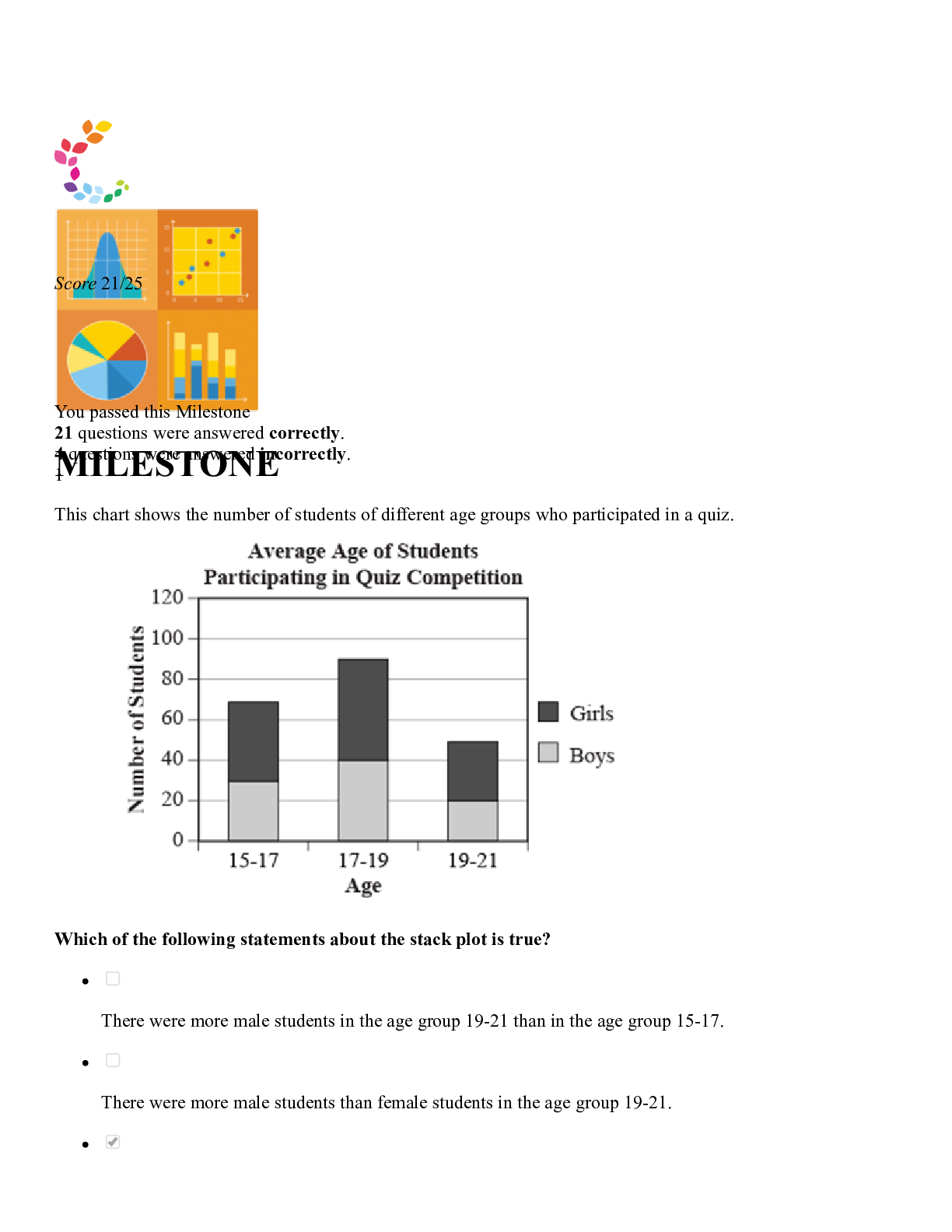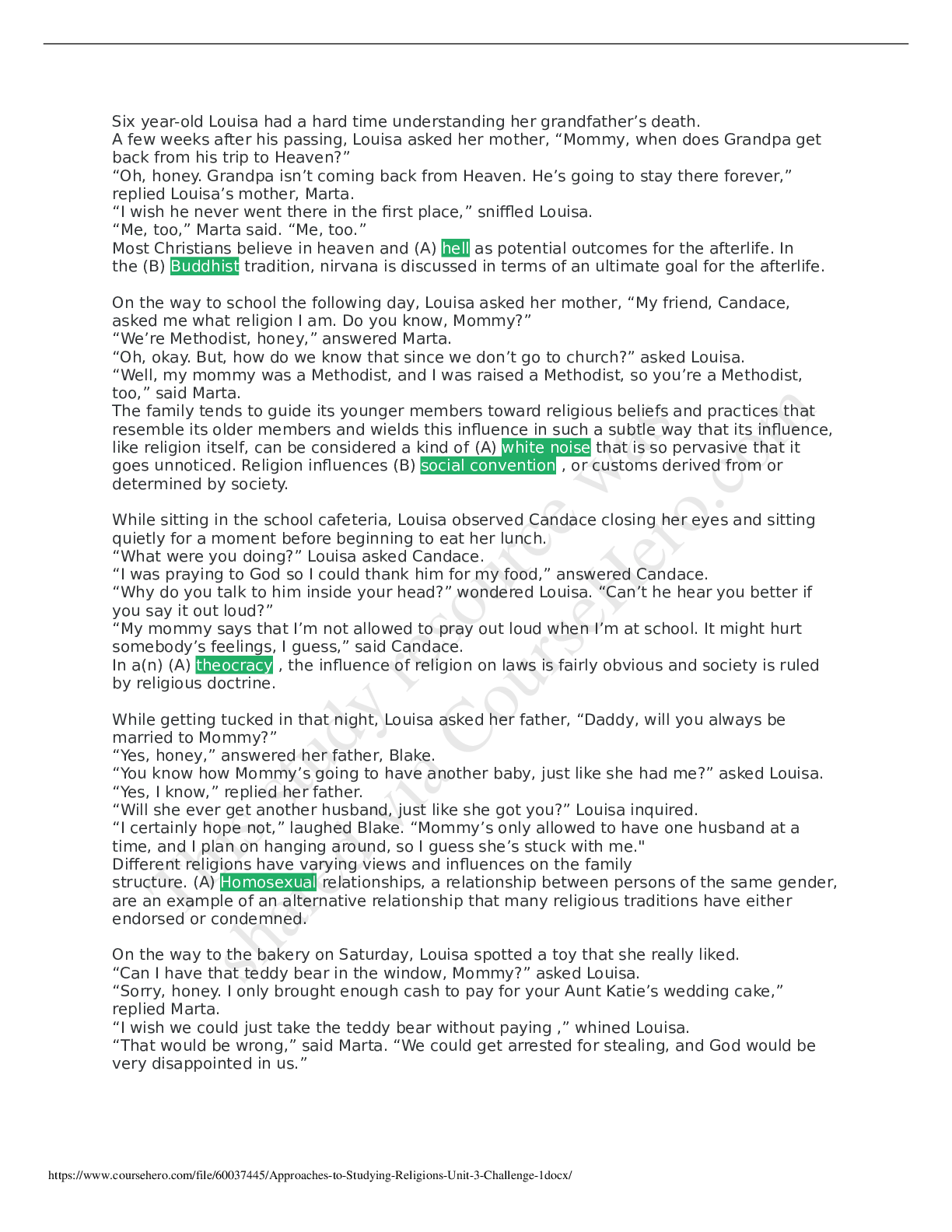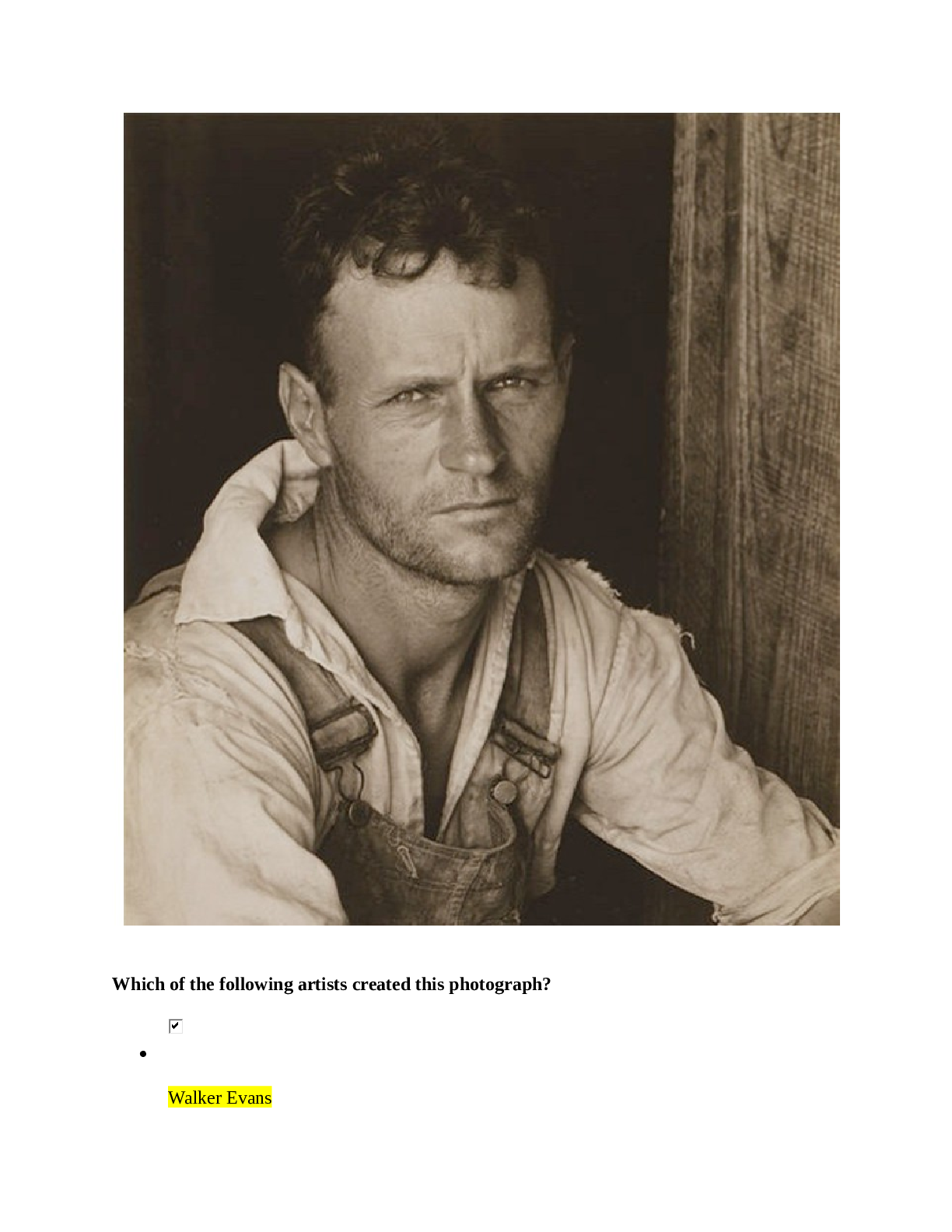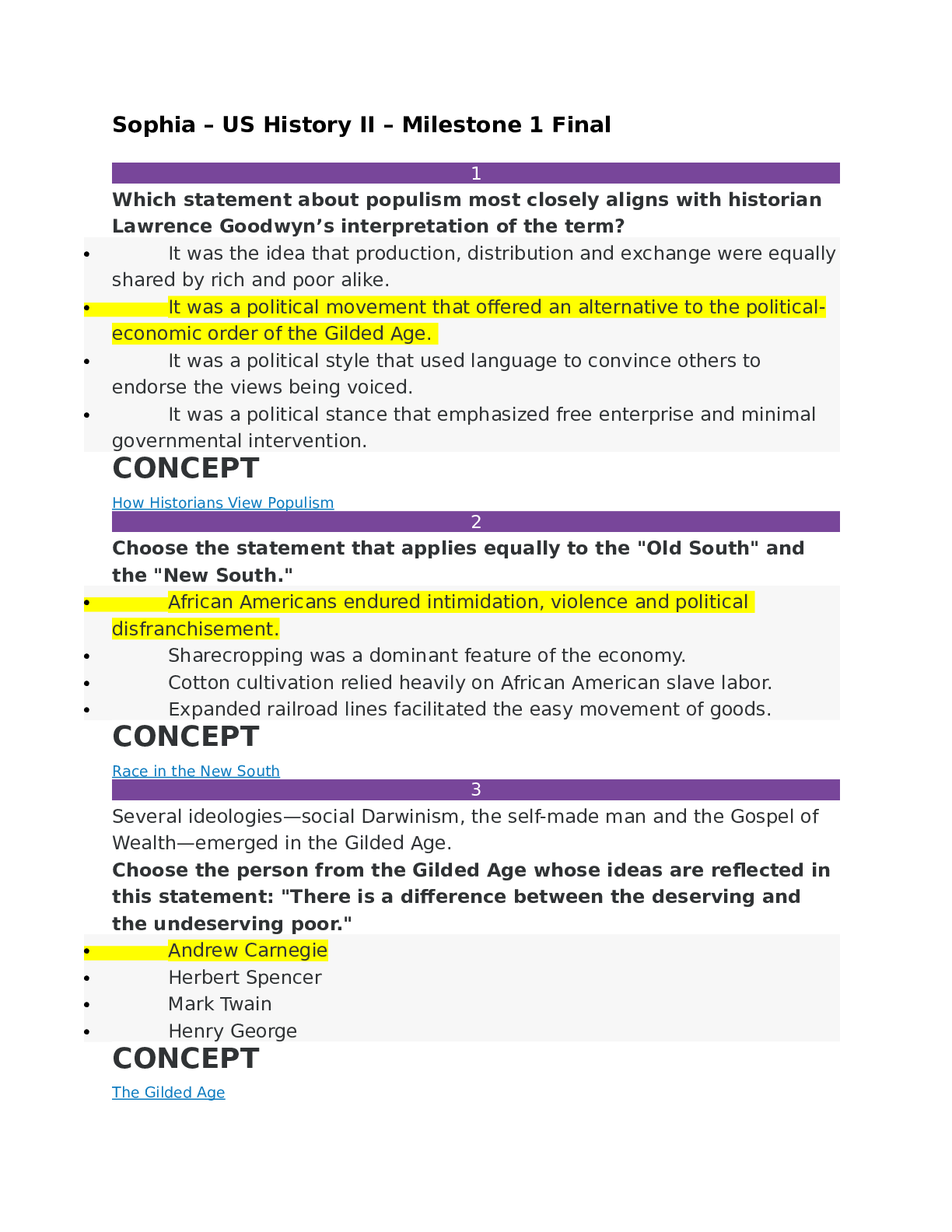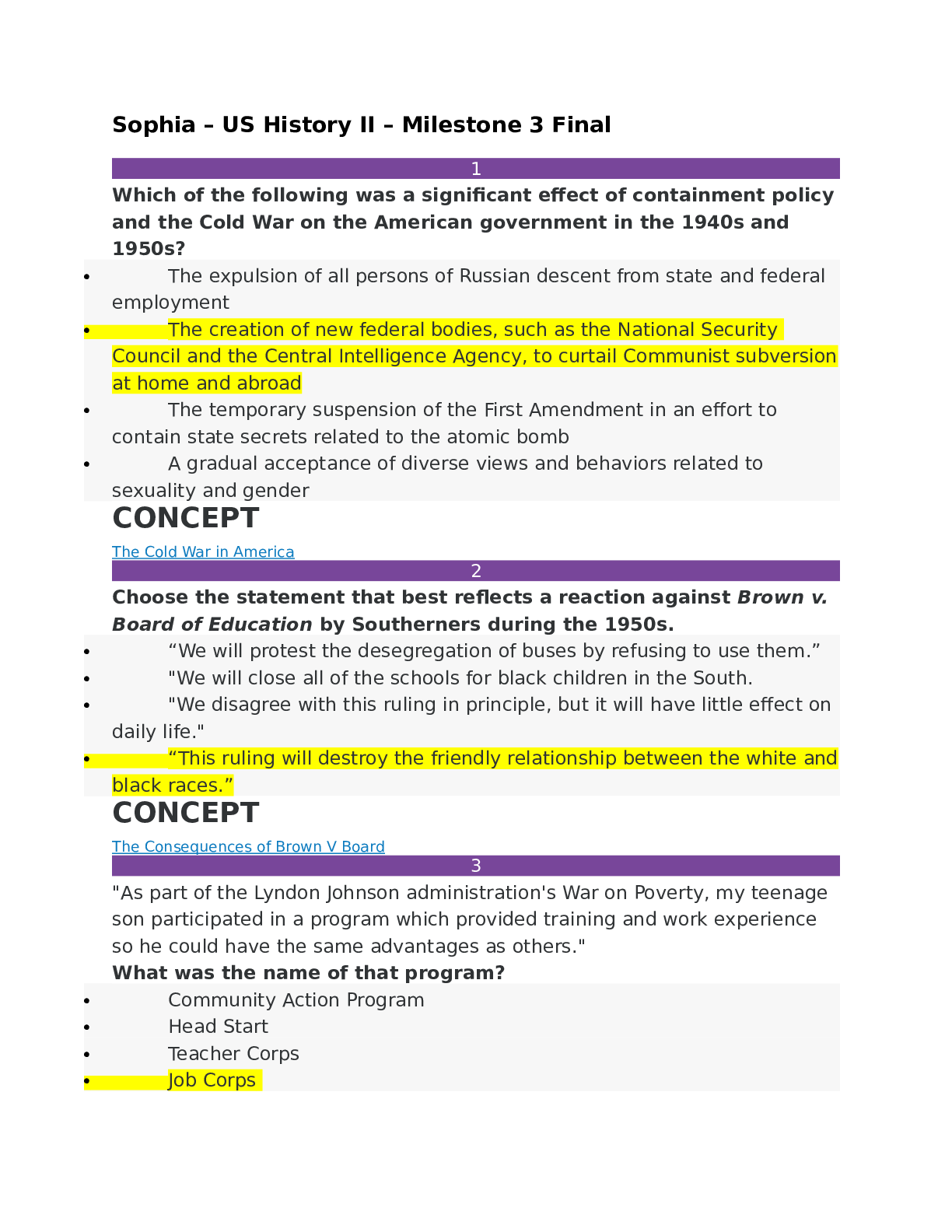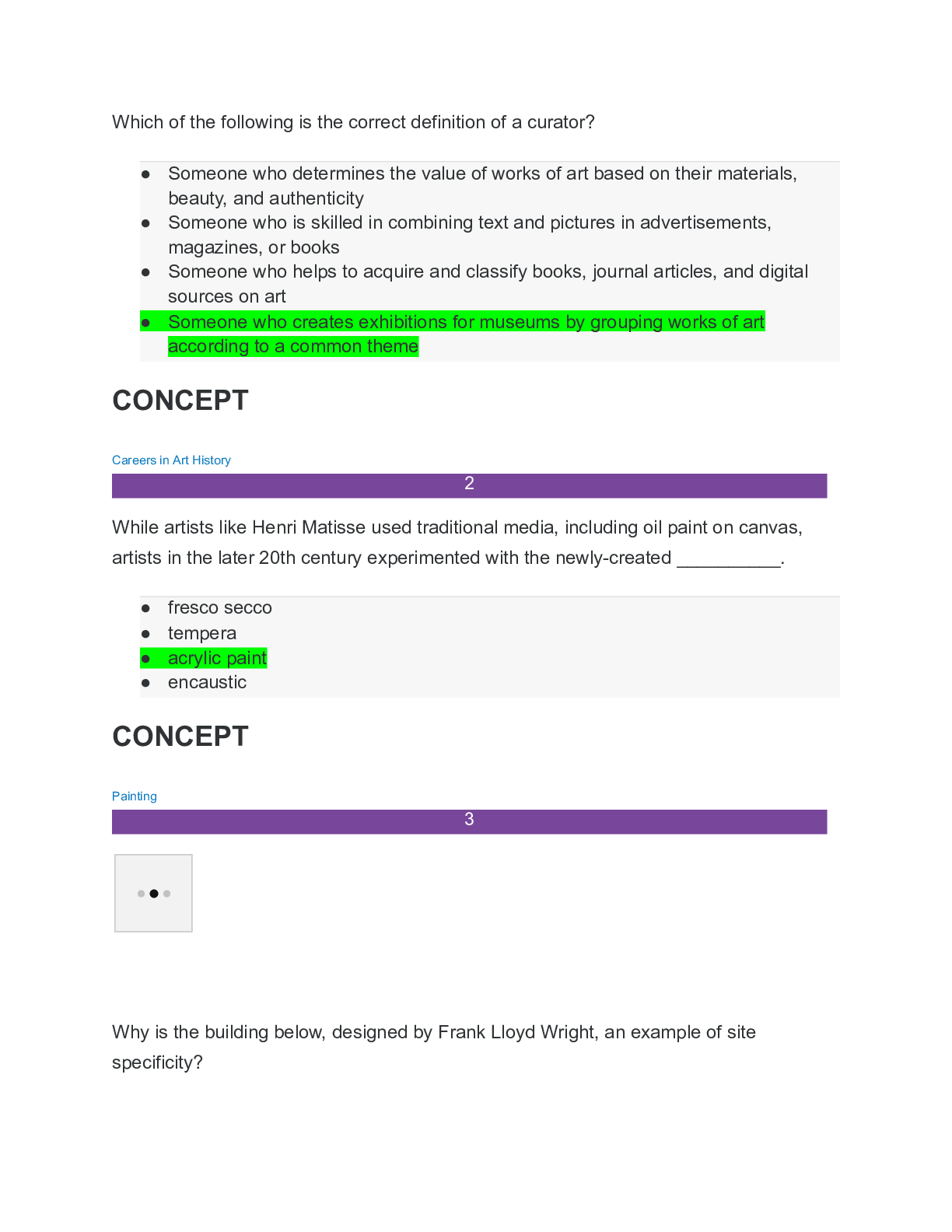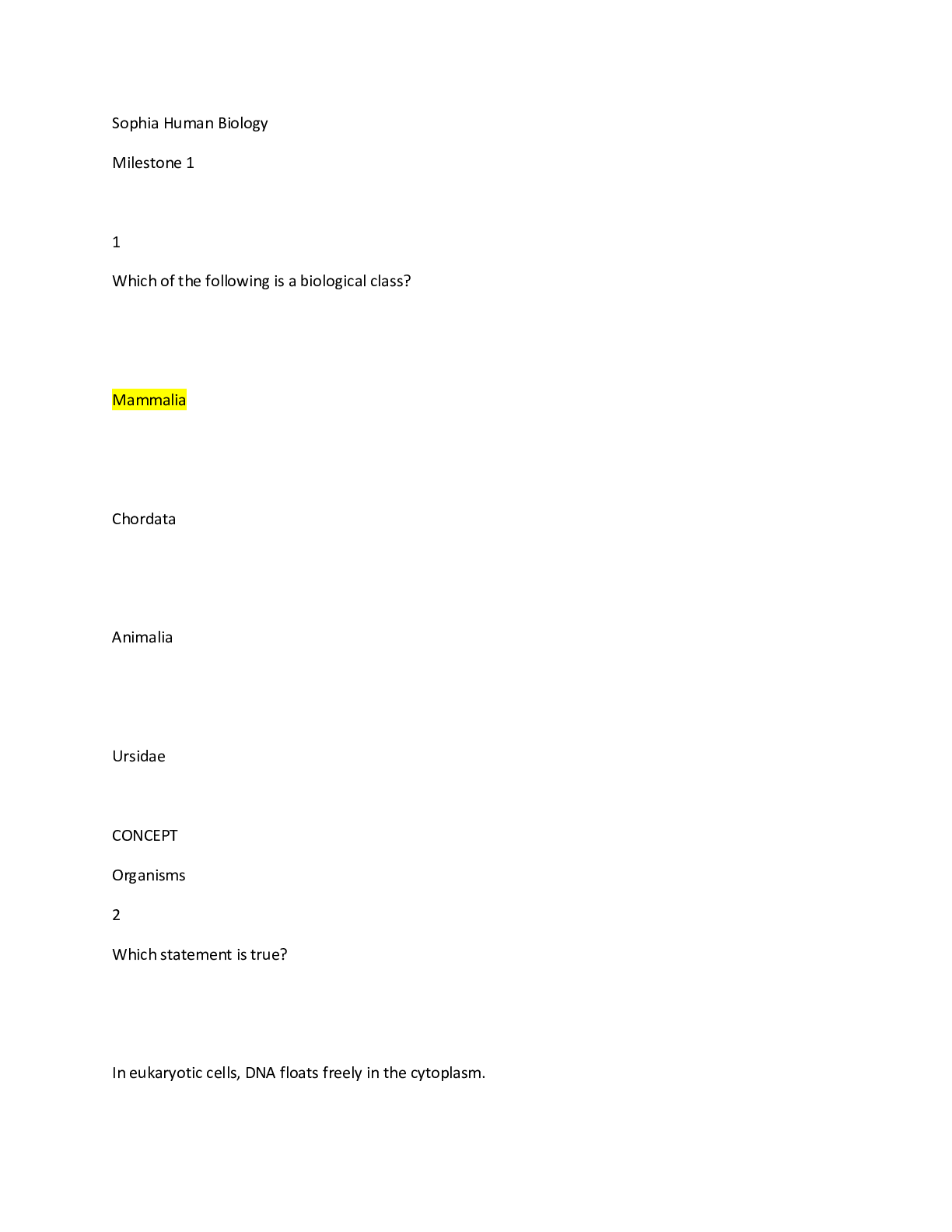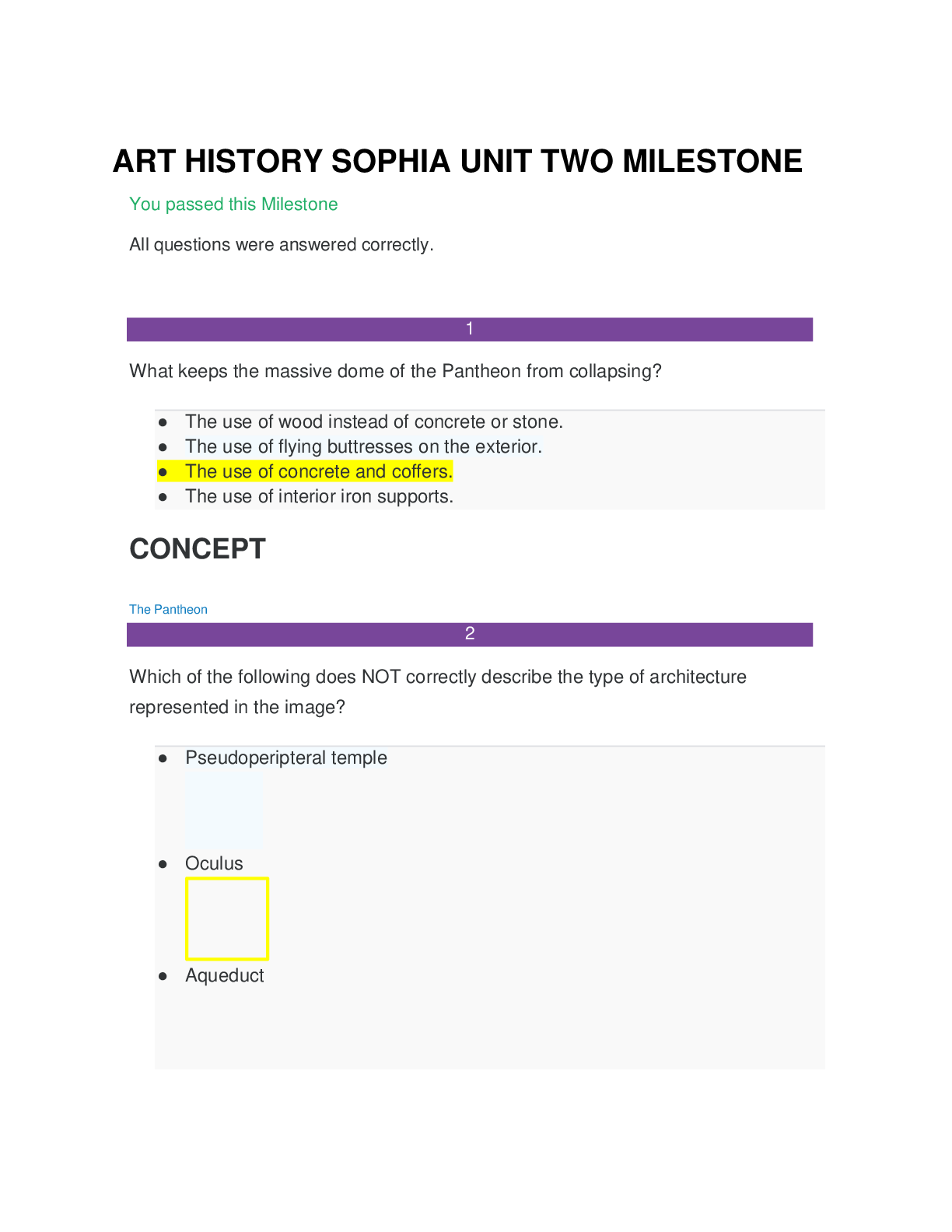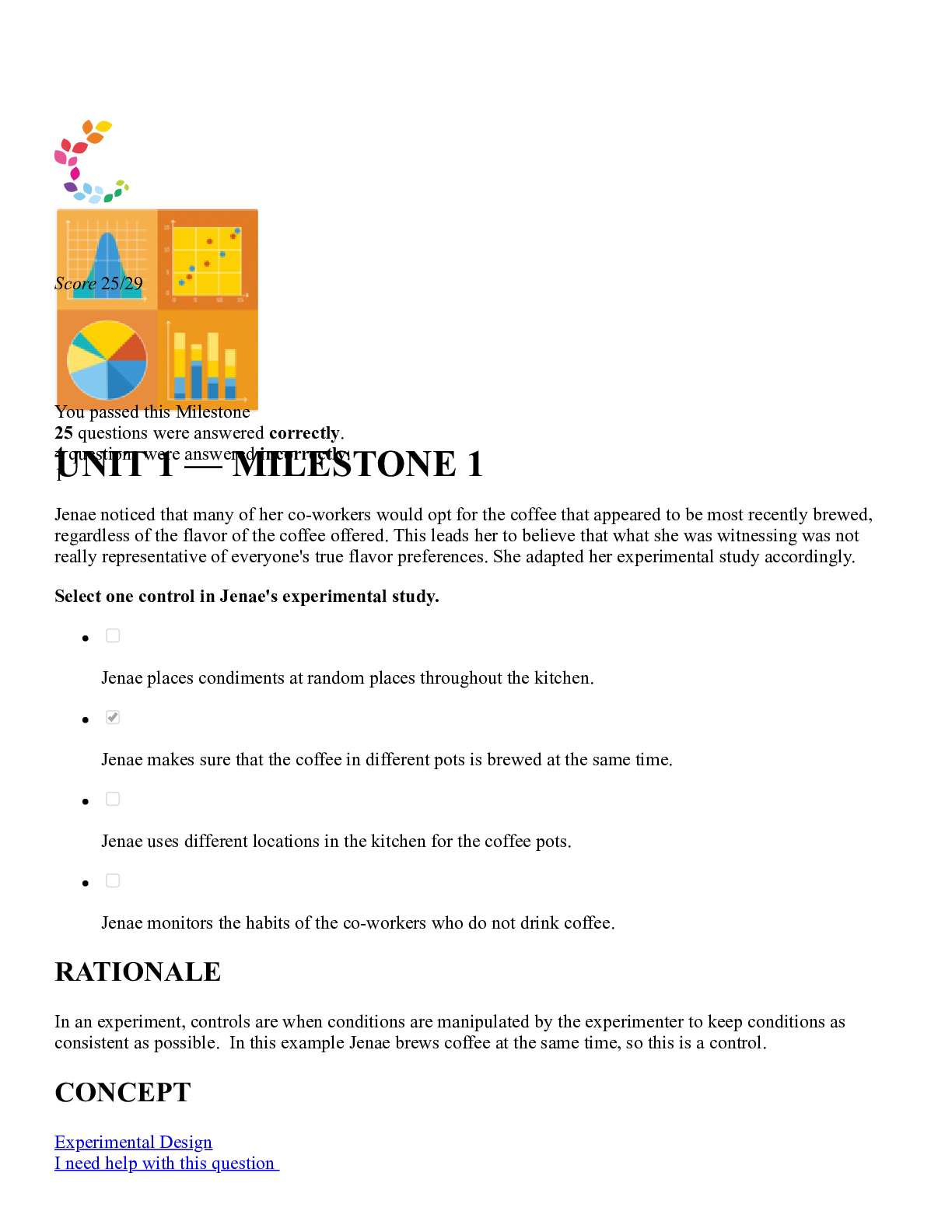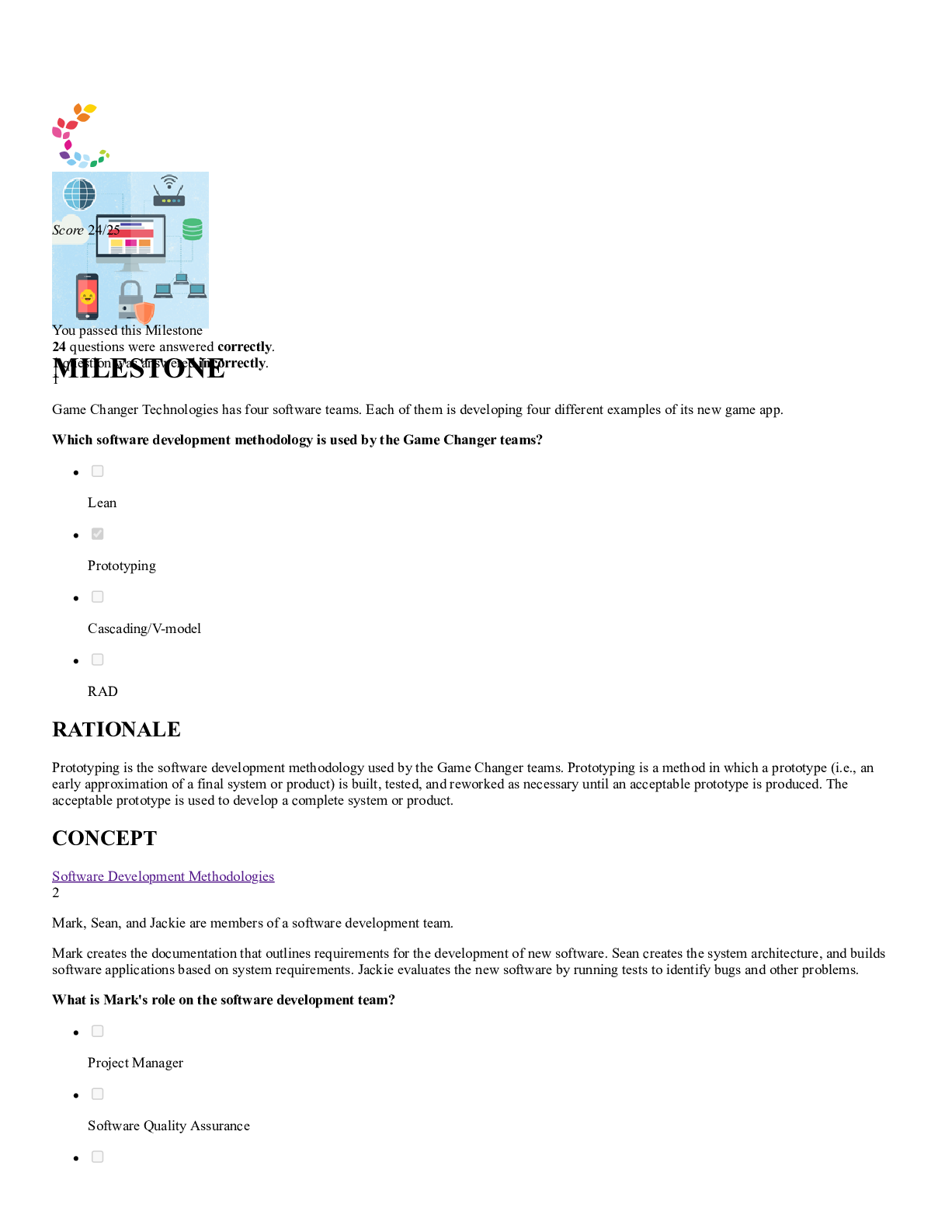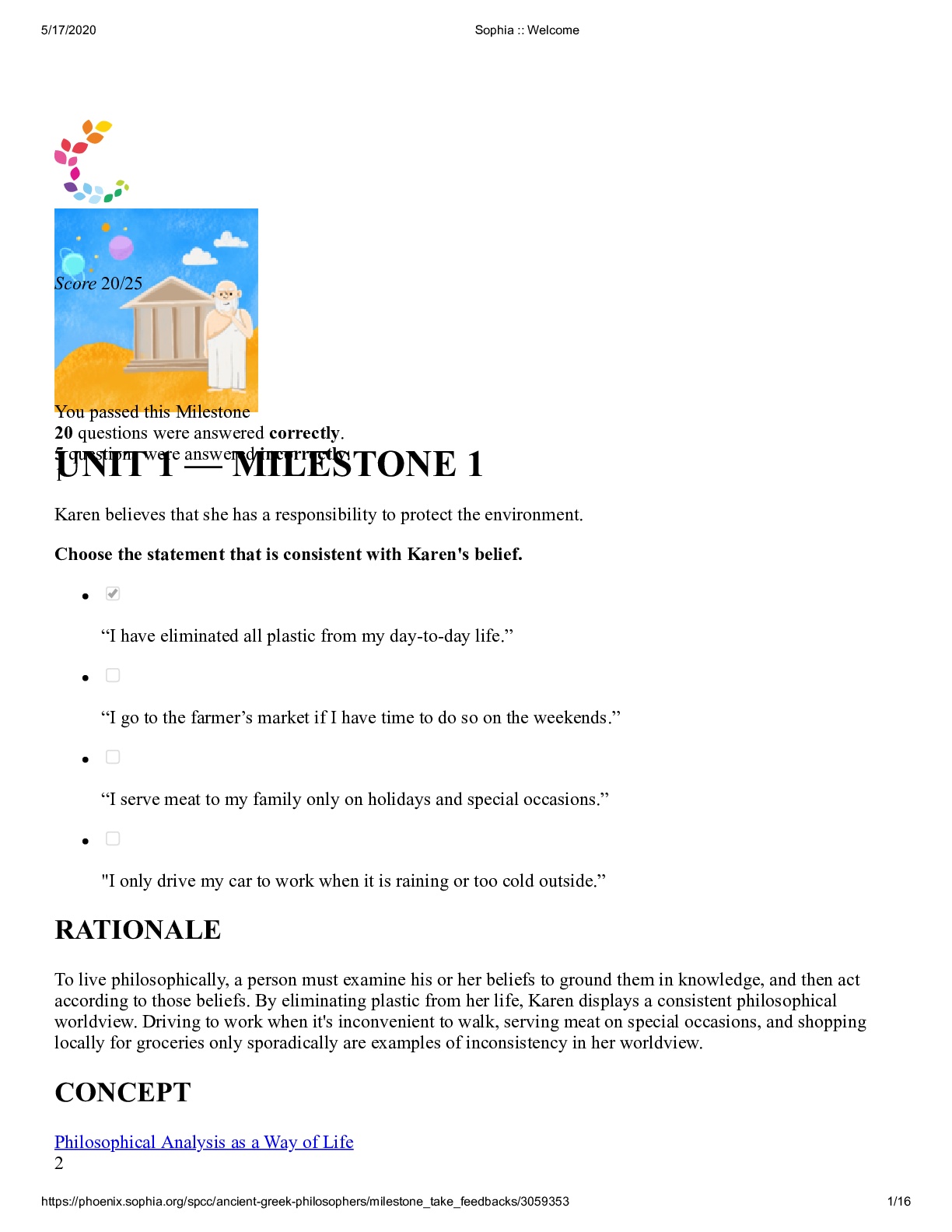History > SOPHIA Milestone > Sophia US History II Milestone I 2020 (All)
Sophia US History II Milestone I 2020
Document Content and Description Below
UNIT 1 — MILESTONE 1 Score 19/25 You passed this Milestone 19 questions were answered correctly. 6 questions were answered incorrectly. 1 How did a series of Supreme Court rulings in the 1870s... influence the establishment of Jim Crow in the South? The court's rulings confirmed the South’s right to segregate on constitutional grounds. The court's rulings diminished protections provided by the 14th Amendment. The court's rulings upheld orders to restore a pre-Civil War social order in the South. The court's rulings affirmed literacy tests and poll taxes for African American voters. RATIONALE Jim Crow, or the system of laws and social codes designed to regulate and monitor the physical and social segregation of whites and blacks in the post-Reconstruction South, was developed and reinforced through Southern political, social, and economic institutions. It was also enabled by rulings made by the Supreme Court in cases such as United States v. Cruikshank and the Civil Rights Cases. Rulings in these cases appliedSophia :: Welcome 11/10/20, 10:42 PM https://www.sophia.org/spcc/us-history-ii/milestone_take_feedbacks/6837632 Page 2 of 20 a narrow interpretation of 14th Amendment protections for civil rights and put up no resistance to Jim Crow. CONCEPT Race in the New South 2 Consider the excerpt from a speech given by the former slave and abolitionist Frederick Douglass: I have had but one idea for the last three years to present to the American people, and the phraseology in which I clothe it is the old abolition phraseology. I am for the "immediate, unconditional, and universal" enfranchisement of the black man, in every State in the Union. [Loud applause.] Without this, his liberty is a mockery; without this, you might as well almost retain the old name of slavery for his condition; for in fact, if he is not the slave of the individual master, he is the slave of society, and holds his liberty as a privilege, not as a right. He is at the mercy of the mob, and has no means of protecting himself. When applying the five Ws to this source, which question would be least useful for a historian to ask? How long was the speech? What was the purpose for the speech? Who was the audience for the speech? When was the speech delivered? RATIONALE To achieve a full understanding of this primary source, a historian would analyze it using questions associated with the five Ws. Doing so would reveal: •What: that Douglass's speech advocated for the "'immediate, unconditional, and universal’ enfranchisement of the black man" after the Civil War; •Who: that the audience for Douglass's speech, the Massachusetts Anti-Slavery Society, remained an active abolitionist group after the war; and •When: that Douglass gave this speech as the Civil War was ending [Show More]
Last updated: 1 year ago
Preview 1 out of 20 pages
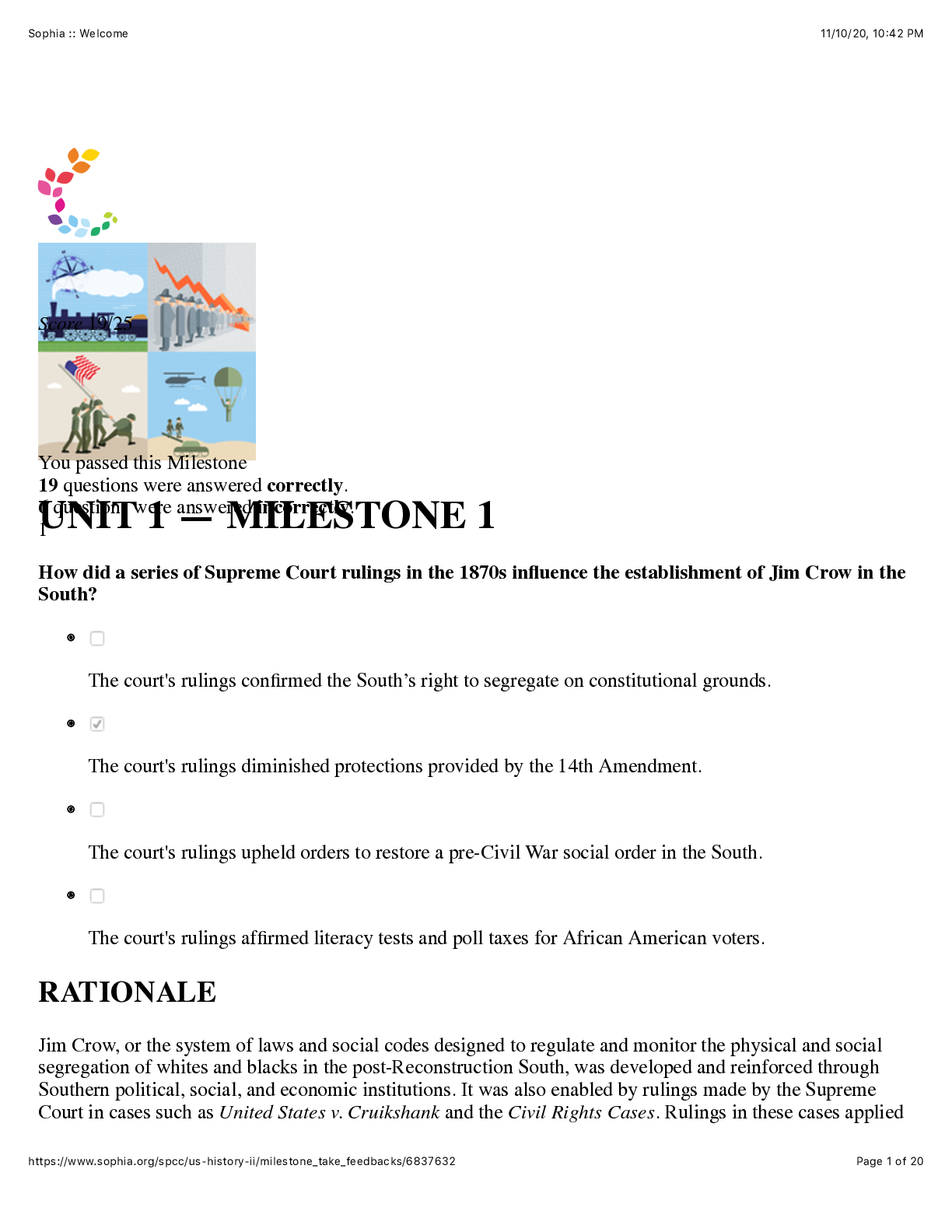
Reviews( 0 )
Document information
Connected school, study & course
About the document
Uploaded On
Apr 21, 2021
Number of pages
20
Written in
Additional information
This document has been written for:
Uploaded
Apr 21, 2021
Downloads
0
Views
49

